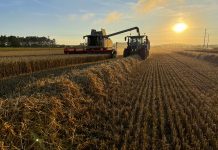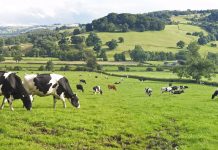Zachary Senwo, PhD, Professor, tells us what we need to know about soil rhizosphere, agriculture and human health
Knowledge of plant-microbe interactions within the soil rhizosphere has deep implications for agriculture and human health. Thousands of years ago, the Earth’s inhabitants domesticated plants and animals without the scientific knowledge of how essential resident microbial communities are to plant productivity and human health. The rhizosphere is considered the immediate soil zone around the plant roots influencing microbial associations, proliferations and activities. It is characterised by overly complex plant roots, plant growth-promoting rhizobacteria, microflora and fauna interactions.
Rhizospheres nurture diverse organisms that are useful in biogeochemical and physical processes that promote soil health and in return, support and protect plant growth, agriculture production, human and animal health. Various plant species within the same soil often have distinct rhizosphere communities. Resident microbes interact with plants to neutralise toxic compounds, fix nitrogen, enable plants to resist disease, heat, flooding, drought; deter pathogens and predators, and promote nutrient use efficiency and ecosystems services.
Soil rhizospheres, microbial communities & plant health
Rhizospheric contributions to soil and plant health have been known for a long time. In over two decades and counting, our capabilities to study and understand these complicated microbial communities and associations to unravel the detailed mechanisms by which they interact has improved enormously. Multiple grains and other crop strains are grown worldwide in environments harbouring local microbial communities that differ from the plants’ initial origins, and with conditions such that the plants might need new microbial partners to prosper.
Gkarmiri and colleagues (2017) employed RNA staple isotope probing and high-throughput sequencing to characterise the active microbiomes of bacteria and fungi colonising the oilseed rape roots and rhizospheres to identify taxa assimilating plant-derived carbon. Professor Senwo and colleagues (2011) combined enzyme profiling, fatty acid methyl ester (FAME) and pyrosequencing techniques to evaluate microbial communities and diversities, and the biogeochemical functionalities of an organic agriculture farm under lettuce (Lactuca sativa), potato (Solanum tuberosum), onion (Allium cepa L), broccoli (Brassica oleracea var. botrytis) and Tall fescue pasture grass (Festuca arundinacea).
The three most predominant families were Flavobacteriaceae, Sphingobacteriacea and Flexibacteraceae. The bacteria communities, Flexibacteraceae, Xanthomonadaceae, Rhodocyclaceae, Opitutaceae, and Streptomycetaceae were lower under pasture compared to the other rhizospheres. Interestingly, some of these bacteria were highest under broccoli (Flavobacteriaceae, Sphingobacteriacea, Flexibacteraceae, Xanthomonadaceae, and Opitutaceae). Certain bacteria highest under pasture tended to be exceptionally low (0–0.89%) under the other rhizospheres (i.e., Rhizobiaceae, Acidobacteriaceae, and Bradyrhizobiaceae). For instance, Bradyrhizobiaceae revealed the highest relative abundance under pasture (1.97%) and was barely detected under broccoli and lettuce.
Soils under potato and pasture showed the highest fungal:bacterial ratios compared to soils under lettuce, onion and broccoli. In contrast to pasture and potato, onion showed the lowest microbial biomass, the sum of fungal and bacterial FAME indicators, and enzyme activities. Onion rhizosphere also showed a high abundance of the Streptomycetaceae family, which are known to produce secondary metabolites that can exert antagonistic activities against phytopathogens. The possibility that this bacterial family may have reduced important members of this soil microbial community, as reflected in the enzyme activities and microbial biomass, should be explored. This type of study may serve as the basis for future studies trying to identify microbial diversities or communities important in soil processes and health, plant productivity and the nutritional value of crops.
Relating plant nutrition & human health to soil rhizospheres
Rhizosphere is not only an important area of the plant ecosystem, but also governs the chemistry of plant nutrient acquisitions. Plants secrete such exudates as sugars, organic acids, and amino acids that influence soil microbial communities and activities resulting in elevated numbers of microorganisms. These microbes either aid the plant to acquire nutrients from soils or participate directly or indirectly in the biocontrol of plant pathogens. Rhizosphere bacteria participate in the biogeochemical cycling of both macronutrients and micronutrients or determine their bioavailability for plants and microbes. Within the rhizosphere are N2 fixers bacteria in symbiotic associative relationships with plants; in addition to ammonifiers and nitrifiers converting organic N compounds into readily plant available inorganic N forms (NH4 and NO3). Rhizospheric bacteria generate such enzymes as phosphatases to mineralize organic phosphorus; aryl sulfatases to mineralize organic sulphur, amidohydrolases to mineralize organic nitrogen, and carbohydrolases to mineralize organic carbon. Fungi will release organic acids that act on phosphate rock materials or chelate iron, manganese or aluminium in organo-complexed metals.
Mycorrhizae promote symbiotic associations with plants by increasing the nutrient and moisture absorptive areas within the rhizospheres. Within the rhizospheres are certain microbes that produce ferric (Fe3+) ion complexing siderophores compounds. Siderophores are low molecular weight, ferric (Fe3+) ion transporting compounds with high ferric (Fe3+) ion affinity. They stabilize soluble Fe3+ for microbial uptake.
Rhizospheric organisms are known to create environments that favour redox reactions for iron and manganese dissolutions and availability. Actinomycetes are sources of the characteristic soil aroma (geosmin) of freshly disturbed soils. Members of the actinomycetes genius Frankia contain nitrogenase that will initiate root nodules of non-legumes actinorhizal plants, especially in tropical ecosystems. The most significant medical use of soils is the isolation of antibiotics from soil organisms. Numerous soil organisms including actinomycetes and fungi are known to generate antibacterial properties (Wolf and Snyder, 2003; Pepper et al. 2009). Soil actinomycetes are sources of clinically relevant antibiotics. Dr Selman Waksman (soil biochemist, at Rutgers University) and his research teams discovered antibiotics that inhibits gram positive and negative soil-dwelling bacteria. He was awarded the Nobel Prize in Physiology in 1952 for the discovery of streptomycin, the first effective treatment for tuberculosis (Woodruff, 2014).
References
Gardner, T., V Acosta-Martinez, Z Senwo, SE Dowd. 2011. Soil
rhizosphere microbial communities and enzyme activities under organic farming in Alabama. Diversity. 3:308-328.
Gkarmiri, K., S Mahmood, A Ekblad, S Alstrom, N Hogberg, R Finlay. 2017. Identifying the active microbiome associated with roots and rhizospheres soil of oilseed rape. Appl Environ Microbiol. 83:1-14.
Pepper, IL., CP Gerba, DT Newby, CW Rice. 2009. Soil: A public health or savior? Critical Reviews in Environmental Science and Technology. 39:416-432.
Woodruff, HB. 2014. Selman A. Waksman, Winner of the 1952 Nobel Prize for Physiology or Medicine. Appl Environ Microbiol. 80:2-8.
Wolf, B., GH Snyder. 2003. Sustainable Soils. The Place of organic matter in sustaining soils and sustainability. Food Products Press, Binghamton. N.Y.
*Please note: This is a commercial profile











